
“The whiny guy from SWINGERS is gonna direct
IRON MAN?” That was the stunned reaction from many in the fanboy community
— myself included — when actor-turned-director Jon Favreau was first handed
the keys to the hallowed Marvel franchise way back in July of 2006. I mean,
ZATHURA was all right and all, but putting one of comicdom’s most interesting
and complex characters in the hands of a relative genre neophyte seemed like a
major misstep for the first self-financed project from Marvel’s fledgling Marvel
Enterprises.
Cut to almost two years later and my oh my, how
things have changed. After setting last year’s Comic-Con crowd ablaze with his
propulsive, Sabbath-blasting teaser trailer, he’s steadily stoked the fire with
every fan-pleasing image, clip and story detail that’s been subsequently
released. Now even his most questionable creative choices — scandal-prone
Robert Downey Jr. in the title role? — all seem like home runs. Even more
promising is the fact that there have been zero reports of on-set turmoil, hasty
re-writes or improper meddling from studio execs (unlike with, say, Edward
Norton’s HULK re-boot). All signs indicate that IRON MAN is poised to step into
the space left vacant by the dormant SPIDER-MAN and X-MEN franchises.
At last June’s IRON MAN set visit in Play
Vista,California, Favreau surprised attendees when he emerged sporting a newly
svelte figure. Check out what he had to say about IRON MAN.
Jon Favreau

I noticed there was an announcement on your
blog that IRON MAN is going to be PG-13.
I put it up. A lot of times I make announcements.
I’ll jump on the IRON MAN movie group and if I see people talking about
something or they have a question or they’re speculating, I’ll clarify as
best I can with pertinent information. But I don’t really make announcements
like that, like, “Here’s the big announcement: The movie’s going to be
PG-13.” You don’t know but that’s what we’re all shooting for, so when
people are speculating – like when FANTASTIC FOUR 2 was given a PG and people
were surprised by that, they were wondering what we’d be. I said I thought we
would be PG-13.
What was the reason for that?
I think you want it to be entertaining for
everybody, you want it to be appropriate for kids but not geared towards kids,
and I think PG-13 is that good balance where you can have violence, you can have
real life or death stakes, but yet it’s something I’d be comfortable
bringing a younger than 13-year old kid to. But it’s tough – these type of
movies, you want it to be good for the whole audience, for everybody, and if you
skew too young you will disappoint adults and if you make it too dark and too
violent or [feature] too much explicit language or sexuality, there’s a lot of
kids out there who want to see it. I don’t want anything in there that’s
going to make me as a responsible parent uncomfortable repeating something at
school or seeing something that’s going to freak him out too much.
Is that why you maybe decided not to explore
Tony Stark’s alcoholism in the first film?
I’m trying to be dictated by the story of the
books and “Demon in a Bottle” happened, what was it, in the ‘80s? It was
much later, so what you really grasp for if you’re lucky enough to make more
than one of these is what happens to the character, how does [he] change so it
doesn’t feel like a serialized hero that goes through fighting different types
of bad guys. How does he progress through each story? The good thing about an
origin story is that you have a whole Joseph Campbell journey that the guy goes
through in becoming a hero. The problem is you have so much story to tell that
it starts to get clogged up with too much stuff and you end up rushing through
beats or villains or things. The problems with the second or third ones are
you’ve got great villains, but how is he different from the beginning to the
end of the movie. For me as a filmmaker and a storyteller I really look for that
progression of character as what’s the mythology of this movie, what’s the
myth of this movie, and that’s what makes it entertaining.
What are the fights going to be like, and how
does the suit change the way the fights might be shot?
Well, as far as the technology that you use,
it’s pretty – we have all the options. We have ILM, and after seeing the last
Pirates movie I feel quite comfortable they will make it look good. And then you
have the Stan Winston suit that you have to help it feel real and connect
things. I think you’ve got to do a little bit of a shell game with the
audience, show them real one shot, fake another shot and not let them know where
one shot becomes real and digital until their left brain is so locked up
worrying about it that their right brain can enjoy the movie. I think you always
have to look for fancy things to do. I think you have to be innovative in the
action, because there’s a lot movies I saw and enjoyed where I couldn’t
follow the story and didn’t give a damn about the story but the action was so
innovative it entertained me and I was excited by it. Honestly with these types
of films you’re working on the action long before you’re working on the
dialogue, you’re working with storyboard artists, with writers, with actors,
producers, [and] studios.

What is this story about for you and what’s
interesting about the character?
The story for me is about a guy who – every
movie, something’s rotten in Denmark . You’ve got to start off with
something’s out of balance in the world. In the case of Marvel movies
especially, you look at the personal life of the character in the microcosm, and
then you sort of look at the macrocosm of the climate of the world – there’s a
super villain doing something, there is a problem in the world that has to be
fixed, otherwise life as we know it will not exist. But then also in the
character’s private life, there is a thing that happens too, and what’s nice
about Tony Stark is he’s a guy that you sort of have all of the flash and
glamour of Tony Stark the billionaire inventor genius and playboy and then you
get to play the fun of that but then you also get to explore what that might
lead to be desired. How is he flawed? How does he grow and change through his
captivity, and when he comes back how does he become Iron Man? What are the
steps in that journey that gets us to the point where we understand who he is
and what he stands for and how he’s changed.
Where are we today?
This is the beginnings of his workshop, and the
beginnings of what will be the Hall of Armor. This is below his house. We built
a house that sits on the bluffs overlooking the Pacific in Malibu, and we have
another set that we’re shooting in today that’s what sits above this. It’s
sort an architectural high-tech home and this is his sub-basement, so out those
windows you would see the Pacific ocean. That’s a driveway up and out of his
house; he has just all of these awesome cars, everything from a ’32 Ford
Roadster all the way through a Tesla electric car. We have everything here lined
up, and then over here there’s the remnants of everything you could possibly
need for fabrication and design. You could build anything in here, and then this
is more of a living area, and so this is sort of where he would seclude himself
and we sort of suggest that all of the inventions and innovations that come out
of Stark’s mind usually start alone here as opposed to his office at Stark
Industries. This is probably where most of his work happens, at four in the
morning.
Do we see Iron Monger? In interviews Jeff
Bridges has suggested his relationship to Stark is as a mentor.
Here’s the bottom line: we’re making a Marvel
movie and it’s the first time Marvel is making its own movie, and so I feel –
and also as a filmmaker, I want to stay true to the books, but with these movies
everybody’s watching. I’ve been working on this a year, it’s going to be
another year before it’s out, and if everybody figures everything out along
the way it gets to be by the time you see the movie, you feel like you saw the
movie already. So we feel like we put enough twists and turns in there to have
something that you guys don’t know. But, by the same token because it’s
Marvel I want to stay as true to what the broad strokes of what the comic books
are. Is he a mentor to Tony Stark? Yeah, that’s sort of the relationship that
we found between Jeff Bridges and Robert Downey Jr. that would be good. Is it
still Obediah Stane? Yes it is. Are there certain expectations people might have
who have read the comic books for several decades based on who it is? Are they
going to be waiting for the other shoe to fall? I think they probably will, and
I think that we’re not going to change the universe so much that to the
purists it will seem like we betrayed the underlying truths of it. So if
you’ve done your homework on the books it’s going to serve you well when you
go into the movies because we’re doing it too.
Talk about what kind of an undertaking all of
that action is for you as director?
We have a great second unit. There’s a guy
named Phil Nielsen who’s directing second unit as we speak; if you hear
something blow up, he’s probably on the other set blowing things up. We’ve
been very lucky to have a group of people that are very good at developing and
culling the action, and I don’t want to sit here and pretend that I have huge
action experience. I think I can tell a good story, I think cinematically I can
make something compelling, [but] Matthew Libatique is a great director of
photography, but what I’m bringing to the table is more of the humanity of the
story, enforcing rules on the story where it doesn’t feel like two completely
different films. There is the possibility of that – it goes from Swingers to
Power Rangers and people are like “what am I watching?” sop the trick is to
bring out the human story to a world where it feels like a comic book and it
fits into the genre, and then keeping the action aspect of it, I wouldn’t say
restrained but hold it up to a certain standard of reality that you have a
broadness that you expect in a comic book movie but it’s not just do whatever
the hell you want because it’s a movie and everybody just wants to eat
popcorn. I think in my body of work I have held it to a certain standard and now
in making something that has to be appealing to a larger audience than I have
hit before, I want to make sure that we’re giving everybody what they want and
I’m making it fun and exciting but also making it something that I can be
proud of.
What does Robert Downey Jr. bring to the role?
When we cast Robert and he was approved, it
completely freed me because I knew that I was halfway there to having a movie I
could be completely proud of. I can’t think of anybody better than him. He
brings a reality, a humor, a panache, a life of experience where he really feels
like what he’s bring to the table, there’s a lot of Tony Stark in him and
that’s so much better than trying to teach somebody to pretend that they are
funny or smart or talented or they lived with fame and lived with all of the
challenges and benefits of it.

You look a lot different than the last time we
saw you, Jon. Has this job been that stressful?
Let’s put it this way – I wanted to lose some
weight for a role. And for life (laughs). I just turned 40 and I just had a baby
less than a year ago and I did the math and I’m like I better take care of
myself because I want to be around.
How has your experience been with the fans?
The fans are great. They’ve been great about
everything, and it’s almost like you want something to be a little – you want
them to have a problem with something that’s going on to get it out of the way
because fans for any movie is important. For this particular types of movie,
that’s the nucleus of your audience, and I don’t know if the internet is
something that can be seen as dictating the marketplace – I don’t know how
that works yet – but I know that as a filmmaker I get that fans of this
particular genre are very smart and know more in certain cases than the people
that are working on the movie, as far as how much and specific their information
is. So I like to go there and just get to the minutiae of the detail in some
cases because it’s like Wikipedia – it’s a collection of information from a
lot of people that tends to bear out in a very cogent way. There are certain
people that are idiots, but they don’t tend to be drawn to this material that
much. They tend to give a damn, and most of the stuff I see is, “thank you for
caring so much about it. I’ve been waiting for this movie for 20 years. I’ve
been waiting for ten years since I first heard they were going to make this
movie. This was my particular favorite superhero and it’s nice to see it’s
getting this type of treatment and this type of cast.” When they first hear
it’s getting made, they get excited, and then when they hear who you’re
casting, they say, oh, this might actually be one of those types of superhero
movies, not the other kind of superhero movie.
What lessons if any have you taken from other
comic book adaptations?
I think [Christopher] Nolan has just really
reinvented the genre yet again. I really liked the first BATMAN movie, the Tim
Burton one was very exciting, but the caliber of cast that he was able to get,
the level of storytelling and acting and the sense of fun that was maintained
with a character that I thought was completely picked-over by the time they did
their last movie before that, that they were able to sort of hit reset and come
with that and make it fresh again excited me because it said that the sky is the
limit for who you could get and with a filmmaker with that background. It’s
nice that you have all of these guys coming out of independent films who don’t
resent big movies – it’s not like the ‘70s where the system is keeping us
down; we’re people who grew up loving movies and the reason we’re doing
small movies is because we don’t know any better or have the resources. So as
you see Peter Jackson, Chris Nolan, Bryan Singer finding a way to bring
integrity and a sense of fun to these big movies where you feel like you’re
watching a good movie and it’s not one that a director is doing
apologetically, they’re doing it because they’re excited about it and they
love it, and then I get to play with all of the toys, build the suits, CG, build
all of these great sets. For me that’s what it’s all about and I think
it’s the sort of indie background where all you have is character – that’s
your car chase. Your car chase is a funny scene, your big explosion is two
people having a conversation that’s interesting. It sort of sharpens those
tools so that by the time you have all these great storyboard artists and
designers and CGI wizards coming in, you’re not relying on that, just
hammocking between those set pieces. When I’m here with Gwyneth and Robert, I
would be working with them in the same way as if I’d written a spec script and
shooting it for a million bucks – you bring that same sensibility and hopefully
it all comes together in a way all of one movie and yet it’s not insulting to
smart people and it’s not inappropriate for me to bring my kids to as well.
Have you received any advice from other
actor-directors about doing this?
More from like Kevin Feige, who’s been around
for all of the X-Men movies and now he’s president of production here. He’s
really good at [saying] this is what happens now and “I’ve been to the set
of SPIDER-MAN 3 visiting Sam Raimi and just seeing certain things go so slow
just because they have to, and certain things go really fast, but not being
freaked out when you have 400 people sitting around waiting for one guy to hang
a light. Coming from independent films, knowing how to pace it and do it because
being on budget and on time, you figure out how to do it. But this movie, I
don’t think I’ve ever been on sets like this. I mean, I had a small part in
BATMAN FOREVER and I saw the Batcave and all that stuff and it was really cool,
but DAREDEVIL wasn’t on this scale. Nothing I’ve been on has been on this
scale, so just to walk around, I turned to Peter Billingsley and said, “what
set is that?” I don’t even know what’s going on, and it feels like the
first time I’m seeing it sometimes.

Talk about the design of the suit.
We had some artists that we hired to work on it –
Phil Saunders, Ryan Meinerding worked on various suits that we have. They’re
people I met as I was developing John Carter of Mars, they’re great artists
and they have a whole department overseen by Mike Riva, and then I really
gravitated to the Adi Granov stuff and Adi actually contacted me through MySpace
because I’d set up a group. He contacted me to be my friend and says, “I
thought you might want to meet me. I’m the guy who designed all of the
drawings that you have on your website.” He was really excited to get
involved, we hired him to do some drawings for us, we flew him out here, he met
with Phil and Ryan and Mike and the Stan Winston crew and we all sort of
collaborated together in finding a suit that could be made practically to be
worn so that it wasn’t always a cartoon and also when you have practical
things it tends to make the CG a little more honest because if you have to make
a direct cut from a practical suit that you love how it looks to something
virtual, you now have a litmus test.
What was it important to retain about the
comic book suit?
The suit? The more you could. I didn’t want to
reinvent it. It’s not like a glowing Superman fiber-optic suit. I really am
embracing what it is, and the best thing I heard was first we got the Mark I
out, which we took a little bit of leeway with because in the books it really
doesn’t make sense that he would make that out of spare parts but yet we keep
the personality of it and we were like “holy sh*t that’s so cool.”
Immediately we were like, oh my God, what’s going to happen when they see the
Mark III (laughs), and what happened when we showed the Mark III was this is
great, it’s just like I saw it in my head, and that’s a hard thing to
achieve because everybody sees different sh*t in their head. But they were like,
“oh, that’s clearly a CG suit,” and then they saw the guy moving around
with the suit and people were like, “wait, it’s a real suit with a real
guy.” And of course it could do different stuff in CG than it can real, but
that’s the difficulty – where you don’t want him moving around like Robocop
and then when he flies through the air he looks like Spider-Man. So that’s the
balancing act we’re playing.
What was the most challenging scene to shoot
so far?
We were at Edwards Air Force Base and we got the
great C-17 and the Raptors and all the stuff. [Jim Rhodes,] we made him an Air
Force lieutenant colonel, took a bit of a leap there, but the logistics of that
were very hard because there’s a lot of things you can’t point a camera at
there and there’s a flight line. They’re testing state-of-the-art
experimental aircraft there, and I think we got the best stuff. I mean, there
were hangars there that were like you can’t go near, and I’m sure have stuff
that they’re flying around now.
What has been the most surprising part of this
filmmaking process for you?
I’m surprised I’m on schedule (laughs).
That’s the biggest surprise. Because I brag that I stay on schedule always and
I have on every movie I’ve been on, I’m always on budget and always on time,
and I thought, okay, on this one there’s going to be curve balls and so much
out of my control so the fact that we’re on schedule now and the scenes have
born out well. I’m also surprised at the freedom I’ve gotten from Marvel,
because there are certain things that Marvel is very meticulous about, and
there’s a definite formula to the way action is done. And then when it comes
to the scenes between the people, we have very good actors and Marvel has been
very involved, but they’re a small crew – you have Kevin Feige and you have
Jeremy Latcham who are sort of our executives on the project, and they are here
because Hulk hasn’t started yet so we could sit in the trailer with the Marvel
guys and with the actors and talk about what the scene should be based on what
we’ve shot and what we’ve learned and there’s a flexibility in material.
So in a lot of ways there’s a lot of freedom to try things different way, to
try and get the story to work and then bring a certain humor or a humanity to
it. So there’s a real sense of freshness and discovery on this project.

Was there any concern personally or
professionally knowing that this is Marvel’s first film?
I was ready for the challenge. I mean, I had done
ZATHURA last – my last experiences were developing JOHN CARTER OF MARS and we
did a bang-up job, beautiful artwork, these guys did a great script for us and
everybody loved it and they were just scared of that genre or the material or
the fact that they had STAR TREK coming out next year. They just said, not only
did we not greenlight it, they let the rights lapse thinking that this was not a
project anybody would care to do. Then of course you have Brad Bird and Pixar
and Lasseter thankfully picking it up, and that thing is going to be huge. If
they’re as true to the source material as we were when we were developing it,
they’re going to have a phenomenal movie. Between STAR WARS and 300, this was
like the type of story that you need to find to use the technology that you have
available today. Right across the road they’re doing AVATAR, they’re doing a
huge, huge movie in a room this size. That’s the new way of doing it, so I
think they missed a tremendous opportunity with that but I’m glad that it’s
going to be made.
The last experience before that was ZATHURA,
where we really worked hard, we made a movie that was well-received but was not
really supported in a way where [it could succeed]. It was the best-reviewed
movie Sony had that year and there wasn’t even one billboard up – they
didn’t even print up posters. So it was very disappointing that we can at the
very end of a long string of flops over there at Sony between STEALTH and ZORRO
and everything that they had. By the time that we had come out, there wasn’t
really a game plan to release the film. Fortunately now it’s out on video and
people are seeing it and liking it, but I didn’t want that to happen again. I
didn’t want it to fall through the cracks, so when you work with Marvel you
know there is a fan base of core fans that are going to pay attention to what
you’re doing, and if you’re doing a good job those fans will be very vocal
and word will spread. Right now people try to virally create this sense of
grassroots thing on the internet and they try to force it, and you can’t force
it. It has to come organically and when you do a movie like this you get to play
with all the big toys and you have a fan base that is going to be very vocal
positive or negative. I mean, if you have CATWOMAN they will put the pillow over
the head of the movie and make sure that it never sees the light of day, but if
you have a DARK KNIGHT or if you have any of the myriad of quality movies that
come out, word will get out and people will start to pay attention. I think
reviewers aren’t really paid that much attention – I care about reviews, I
like reviews – but if you look at the correlation between reviews and box office
it doesn’t really correspond and I think people are looking to the internet
and to peers to hear what the buzz is and see how the buzz is growing.
Was there commercial pressure coming off of ZATHURA
that your next movie needs to be a hit?
What’s good is ELF sort of carved a real path
for me, so if ZATHURA had been a bad movie and not made money then I would have
something to worry about, but that’s why you always have to make a good movie.
Because even if the movie doesn’t perform, there are people lining up to work
with you saying “they f*cked up the marketing, but you made a good movie. If
you could make me a good movie, I’ll take care of my end of things.” I
don’t know that’s ever been a director’s job, to create a marketing
campaign; I mean they do and you have a voice in it, but ultimately I think they
just include you enough to make you feel like part of the process so you’ll
hit up the actors to do [what they need]. They can’t get an actor to go to
Comic-Con, but I’ll turn to Robert and say “Comic-Con is fun, it’s going
to blow your mind, wait until you see how many people give a sh*t about this
movie.” And they’ll go, or to say, hey, let’s do this one extra interview,
let’s add another day to the press junket, let’s fly to the premiere here
together, if the director’s excited about it and buys into what’s going on,
I think the actors are more likely to do it. I’m more likely to go out and do
press for the movie, and that’s the type of thing you can’t buy with
marketing money. But I don’t think they really look to directors to lead the
charge in ways other than to participate, so success has a lot of benefits, it
could keep a career going, it could make someone very rich even if the quality
isn’t very good if they’re successful. So success is always good, but if it
doesn’t end up being commercially successful, it better end up bring
creatively successful. If you can’t do either of those you’re not going to
work for long.

What about Terrence Howard? What made him
right for the film?
He’s great. Terrence is someone that they were
talking to even before I had been hired on, so by the time I came in [Avi Arad]
brought in Terrence and it’s hard to argue with casting Terrence. I mean, he
could have been Tony Stark if we had gone a different way – I think he’s got
those type of chops, and the idea that in success, where do you go with these
movies? I think that’s where they fall short. People don’t think far enough
in the future to have a great movie and then they say “how do we do it
again?” That’s the difference between a sequel and a chapter. So in looking
at chapters, you could go War Machine with Terrence Howard, and we want to. We
could go a lot of different ways with this cast that we have.
Do you want to do three films?
If the experience is as good as this, for another
one I would do, keep going. It’s hard to say. Gore [Verbinski] and Sam [Raimi],
I don’t know how excited they would be to do [a fourth film] after what they
went through, that journey of ten years, but I would see working on this thing.
I think it’s fun and great, and hopefully it gets easier as you get it down.
How hard is it to get people back or are they
already locked into sequels?
I think if their experience is good, which it has
been so far, based on what everybody is telling me – maybe they will say
something different to you guys, but I know that I’ve made it fun, I’ve made
it something where hopefully the work is as good of quality as they would do on
any movie. So it doesn’t feel like they’re working on a movie that’s one
for the man – you know, they do one for themselves and one for their career.
Hopefully they saw this as a big movie. I asked Robert what do you want to do in
your career now? He says, I want to make movies that are good and that people
want to see, and it seems very simple but it’s a pretty profound statement.
Actors want to be in movies that are good, that they are proud of, but there’s
nothing more frustrating than making a great movie that is a featured title on
Netflix, oh, I really wanted to see that one. You want to do a movie that’s
going to be part of your culture; PIRATES OF THE CARIBBEAN , if you reference it
everybody knows, and it’s like “The Sopranos.” Everybody knows what
you’re talking about, and you’ve impacted lives, you’ve created a cultural
ripple, and that’s something you can’t always get with an indie. Sometimes
it happens like with SWINGERS but sometimes it doesn’t.
The buzz is only going to continue to build.
How do you respond to that reaction to these comic book titles?
I welcome it because I’m right in there. It’s
not a scary, weird looming presence. I go online, I look at stuff, and I see
what people are saying – hell yeah or what are you doing about this or people
who are confused about this. There are certain things people are confused about
that I want them to be confused about and there are certain things I don’t
want them to be confused about. I don’t want them to be confused about whether
or not we hired somebody to score the film because they’re reading something
on IMDB that something happened, or whether they think the rating is going to be
something else, or whether the suit was designed by this guy or that guy. So I
like to clarify, and then there are things that it’s a game you can play with
the audience, but I think if they know that you care and are paying attention
and there are choices you’re making because you’re making them as a choice
and not because you don’t know what you’re doing, they like it. So to me,
buzz is great. I would have killed for people to care this much about the last
movie I was on. What you don’t want is to just disappear. We’ve worked so
hard – we’ve worked two years on this movie. I’m going to have gone from a
pregnant wife to a walking baby in the time that it makes to make this movie,
and it’s a mindblower (laughs). You’ve got everything on one bad dice roll,
so I love to have the interaction, I love to know that they’re out there, I
love to know that after a 14-hour day and things feel bleak and did I get
everything I need you go online and people are saying right on. Even if it’s a
little thing, it’s a big deal, man – it’s not easy doing this sh*t. It’s
hard but I love it.
Me too. Questions? Comments? Manifestos? Send
them to me at [email protected].


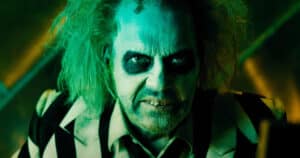





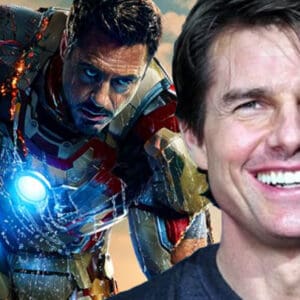
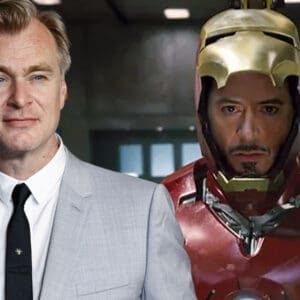
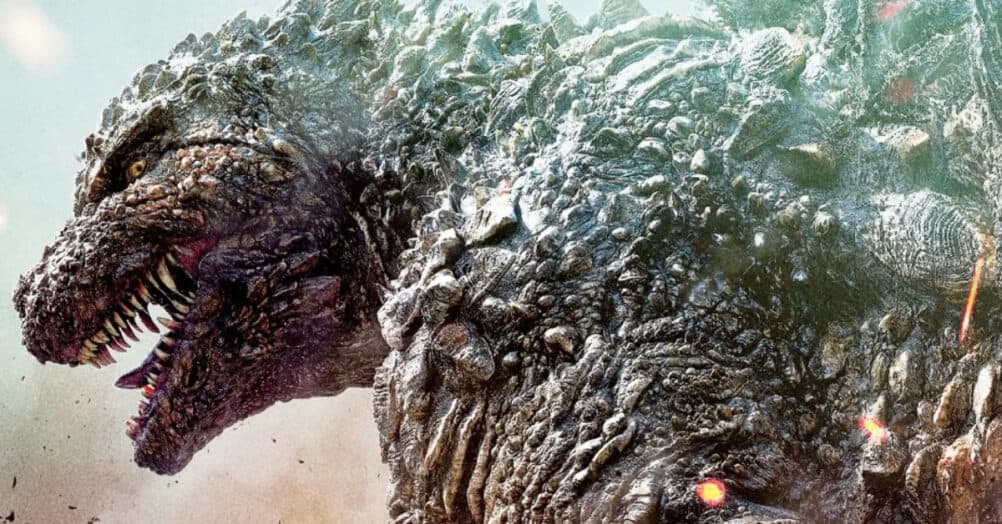
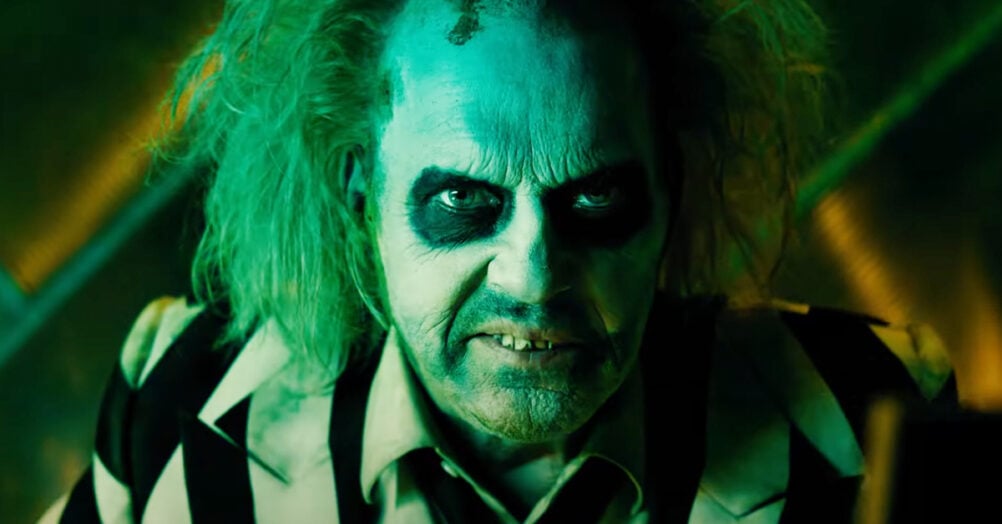



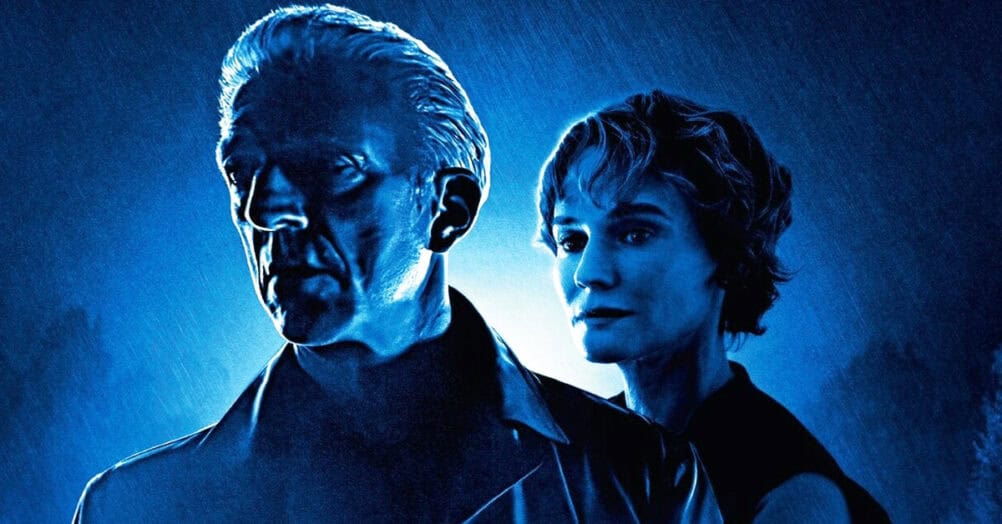




Follow the JOBLO MOVIE NETWORK
Follow us on YOUTUBE
Follow ARROW IN THE HEAD
Follow AITH on YOUTUBE